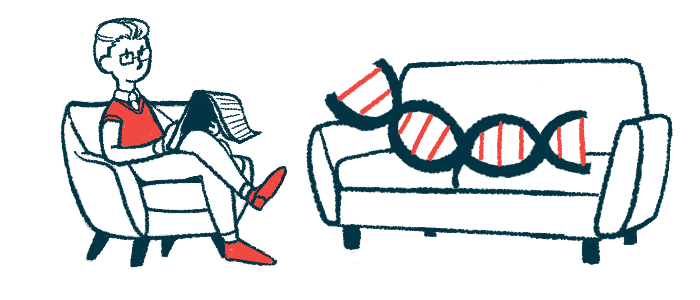Zolgensma found most effective in presymptomatic infants with SMA
Infants with spinal muscular atrophy (SMA) who are presymptomatic and given the gene therapy Zolgensma in the first six weeks of life have better motor, respiratory, and nutritional outcomes, according to a recent study from Europe.
However, researchers found functional motor scores still improved significantly, albeit less dramatically, after treatment in all age groups up to 24 months (2 years).
Zolgensma was also best tolerated when administered at a young age, with fewer liver-related adverse events occurring in treated patients who were younger than 8 months.
“Early treatment, in particular, [at or before] 6 weeks-of-age, is the most important predictor for motor outcome and milestone achievement,” researchers wrote in the study “Efficacy and safety of gene therapy with onasemnogene abeparvovec in children with spinal muscular atrophy in the D-A-CH-region: a population-based observational study,” which was published in The Lancet Regional Health – Europe.
Most types of SMA are caused by mutations in the SMN1 gene, which result in little or no SMN protein. People with SMA experience progressive loss of motor neurons, which are specialized nerve cells that control voluntary movement, and symptoms such as muscle weakness and wasting.
Zolgensma delivers working copies of SMN1 to body’s cells
Zolgensma (onasemnogene abeparvovec-xioi) is a one-time gene therapy that delivers working copies of SMN1 to the body’s cells so that functional SMN protein can be produced.
In the current study, researchers from Germany, Austria, and Switzerland examined real-world data from 343 SMA patients treated with Zolgensma, including patients with or without disease symptoms before treatment. Patients were followed for a mean of 13.8 months. Real-world data provide “families with evidence-based advice and realistic therapeutic goals,” the scientists wrote.
Patients received Zolgensma at the mean age of 14 months. A subset of the patients, 23%, were presymptomatic (symptoms had not appeared yet) at the time of treatment. Of the remaining patients, 44% were diagnosed with SMA type 1, 16% had type 2, and 1% had type 3.
The researchers also examined the impact of the number of SMN2 gene copies on outcomes after Zolgensma. The SMN2 gene provides instructions for making the SMN protein but leads to only about 10% of the functional protein as the SMN1 gene. Some people with SMA have more than two copies of SMN2, which facilitates higher SMN protein production that helps compensate for mutations in SMN1. In this study, 40% of the participants had three copies of SMN2, while all others had the standard two copies.
Results showed that being treated within 6 weeks of birth led to the greatest improvements in motor outcomes. Notably, scores in the Children’s Hospital of Philadelphia Infant Test of Neuromuscular Disorders were significantly higher (better) over the follow-up period the younger the patients were when they received treatment. In contrast, patients older than 2 years showed no motor improvement, though scores remained stable.
Presymptomatic children had higher scores in all motor function tests regardless of their age when they received treatment. Older children were less likely to achieve the motor milestones of independent sitting, standing, or walking. Of note, motor outcome trajectories did not change after Zolgensma gene therapy for those who received pretreatment with either Spinraza (nusinersen) or Evrysdi (risdiplam).
Presymptomatic babies reached more milestones after Zolgensma gene therapy
Among the children who were treated before experiencing symptoms, 43% achieved free sitting, 78% achieved standing, and 74% achieved free walking within the age-appropriate time for normal motor milestones. In contrast, each of these milestones was achieved by less than 10% of patients treated after they first experienced symptoms.
The odds of needing either respiratory support with ventilation or nutritional support was significantly higher the older the patients were when they received Zolgensma. None of the presymptomatic children required respiratory or nutritional support.
Patients with three SMN2 copies had better motor outcomes after treatment. They were also 3.9 times more likely to achieve free standing and 4.2 times more likely to achieve free walking than patients with two SMN2 copies. Again, having more SMN2 copies was associated with more breathing and nutritional independence.
“The patient’s own production of fully functional SMN protein might play an important role in complementing the effect of [Zolgensma], and also in preventing early loss of motor neurons before [Zolgensma] administration,” the researchers wrote.
The therapy caused 263 adverse events in 123 SMA patients, with 40 events requiring hospitalization. Liver-related side effects were reported in 93 children, and were less likely to occur in children treated before they were 8 months old. All other adverse events, which included elevated heart enzymes, fever, and vomiting, occurred similarly across age groups.
‘Underscores imperative for SMA newborn screening’
“This underscores the imperative for SMA newborn screening, facilitating timely treatment intervention, particularly for children at an increased risk of early disease onset,” the researchers concluded.
In a comment published in the same journal, Laurent Servais, MD, PhD, a professor at the University of Oxford, in the U.K., and the University of Liège, in Belgium, said the study group was large and “well-followed and documented, making it an invaluable source of information for understanding the effects of treatments in SMA.” Also, it “gathers data on populations not represented in industry-funded trials, such as patients up to 90 months old [7.5 years] at the time of treatment.”
Still, more data collected over longer periods are needed to help compare existing disease-modifying treatments.
“And finally, what have we learned from the spinal muscular atrophy journey that could be helpful for future conditions like Duchenne muscular dystrophy or Angelman syndrome…?” Servais wrote.
The post Zolgensma found most effective in presymptomatic infants with SMA appeared first on SMA News Today.







